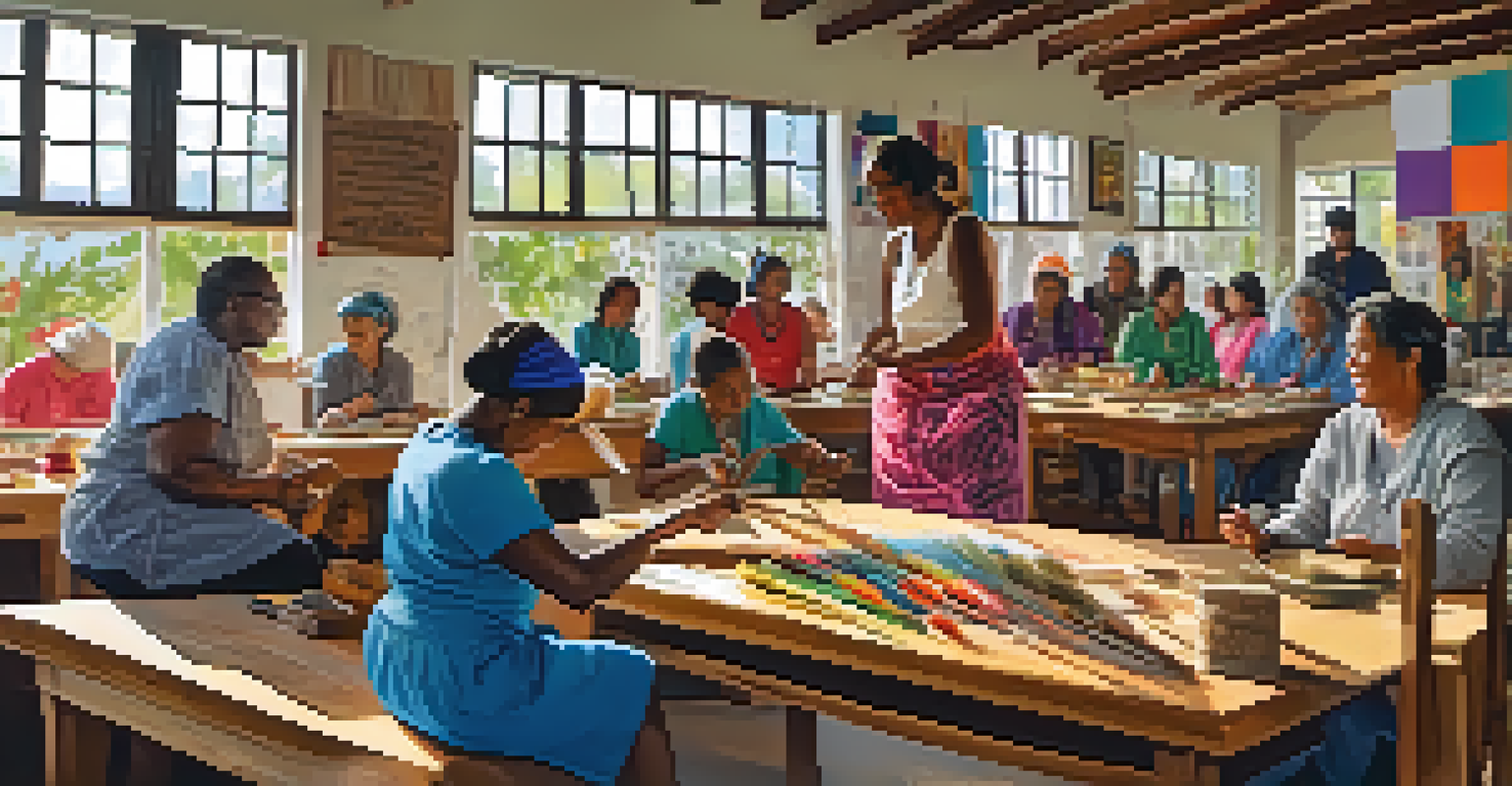Globalization, Art Theft, and Cultural Heritage Preservation

Understanding Globalization and Its Reach
Globalization is the process that connects economies, cultures, and populations across the globe. It's like a vast web, with each strand representing a different aspect of human life, from trade to technology. As borders become less significant, the exchange of ideas and resources flourishes, leading to both opportunities and challenges.
Cultural heritage is the foundation of our identity and the vault of our history.
While globalization fosters cultural exchange, it also poses risks to cultural identity and heritage. For instance, the influx of foreign art can overshadow local traditions, leading to a loss of authenticity. This dynamic creates a complex relationship between global interconnectedness and the preservation of unique cultural identities.
Art theft thrives in this environment, often fueled by demand for exotic pieces in wealthy nations. As art moves more freely across borders, illicit activities can flourish, making it crucial to understand the implications of globalization on cultural heritage.
The Rise of Art Theft in a Globalized World
Art theft has evolved into a significant issue in our increasingly globalized society. Criminal networks often exploit the international art market, making it easier to steal and sell valuable pieces across borders. The allure of high-value art can tantalize thieves, leading to a surge in illicit activities.

For example, masterpieces from war-torn countries are frequently targeted, as they can fetch exorbitant prices on the black market. This practice not only robs nations of their cultural heritage but also removes important historical narratives from their rightful context.
Globalization Impacts Cultural Identity
While globalization promotes cultural exchange, it also threatens the preservation of unique cultural identities and heritage.
As art theft becomes more sophisticated, it poses a challenge for law enforcement and cultural institutions worldwide. The need for international cooperation and improved tracking systems is more critical than ever to combat this growing problem.
Cultural Heritage and Its Importance
Cultural heritage encompasses the traditions, artifacts, and values that define a community or nation. It's not just about preserving the past; it's about maintaining a sense of identity and continuity for future generations. Think of cultural heritage as a tapestry, with each thread representing a unique story or tradition.
The art of the past is the key to the identity of the future.
When art and artifacts are stolen, it’s not just the loss of physical items; it's the erasure of history and identity. These pieces often hold significant meaning and context, providing insight into a culture's values and beliefs. Losing them diminishes our understanding of the human experience.
Preserving cultural heritage is essential for fostering respect and appreciation among diverse societies. It encourages dialogue and understanding, helping to bridge gaps between different cultures in a globalized world.
Challenges in Preserving Cultural Heritage
The preservation of cultural heritage faces numerous challenges, especially in the context of globalization. Rapid urbanization, climate change, and political instability can threaten the integrity of historical sites and artifacts. These factors can lead to irreversible damage, making preservation efforts even more urgent.
Additionally, the demand for cultural artifacts can drive illicit trade, as thieves and collectors seek to exploit vulnerable communities. This creates a paradox where the desire to appreciate cultural heritage can sometimes lead to its destruction. It's a harsh reality that highlights the need for effective protective measures.
Art Theft Exploits Global Markets
The rise of art theft is fueled by criminal networks that exploit the international art market, threatening cultural heritage.
Balancing preservation with the economic pressures of globalization requires innovative thinking. Collaborative efforts between governments, NGOs, and local communities are essential to safeguard cultural heritage for future generations.
International Efforts to Combat Art Theft
Many countries are recognizing the urgency of combatting art theft through international collaboration. Organizations like UNESCO work tirelessly to promote the protection of cultural heritage and facilitate cooperation among nations. Their efforts aim to establish legal frameworks that can help prevent the illicit trade of art.
One prominent example is the 1970 UNESCO Convention, which encourages countries to return stolen cultural property to its rightful owners. This initiative has led to numerous successful repatriations, fostering goodwill and respect between nations. Such collaborative efforts highlight the importance of shared responsibility in cultural preservation.
However, while international agreements are crucial, enforcement remains a challenge. Countries must not only commit to these treaties but also invest in resources and training to effectively combat art theft on the ground.
The Role of Technology in Preservation
Technology is playing an increasingly vital role in the preservation of cultural heritage. From digital archiving to 3D scanning, innovative solutions are enabling more effective documentation and protection of artifacts. These technologies can create detailed records that are invaluable for restoration and repatriation efforts.
Moreover, social media and online platforms are raising awareness about art theft and cultural preservation. They provide a space for communities to share their stories and advocate for their cultural heritage. This democratization of information empowers individuals and organizations to take action.
Community Involvement is Essential
Engaging local communities in cultural heritage preservation fosters pride and responsibility, making efforts more effective.
However, while technology offers exciting possibilities, it also presents new challenges, such as cybersecurity threats. Ensuring the integrity of digital records and protecting them from cyber-attacks is essential for successful preservation efforts.
Engaging Communities in Cultural Preservation
Community engagement is crucial for effective cultural heritage preservation. Local communities hold the knowledge and passion necessary to protect their traditions and artifacts. By involving them in preservation efforts, we can ensure that cultural heritage is respected and maintained for generations to come.
Education plays a pivotal role in this process. By raising awareness about the significance of cultural heritage, communities can foster a sense of pride and responsibility. Workshops, festivals, and cultural exchanges can help reinforce the value of local traditions, making preservation a collective effort.

Ultimately, when communities take ownership of their cultural heritage, they become powerful advocates for its protection. This grassroots approach can significantly strengthen preservation initiatives and combat the negative impacts of globalization.